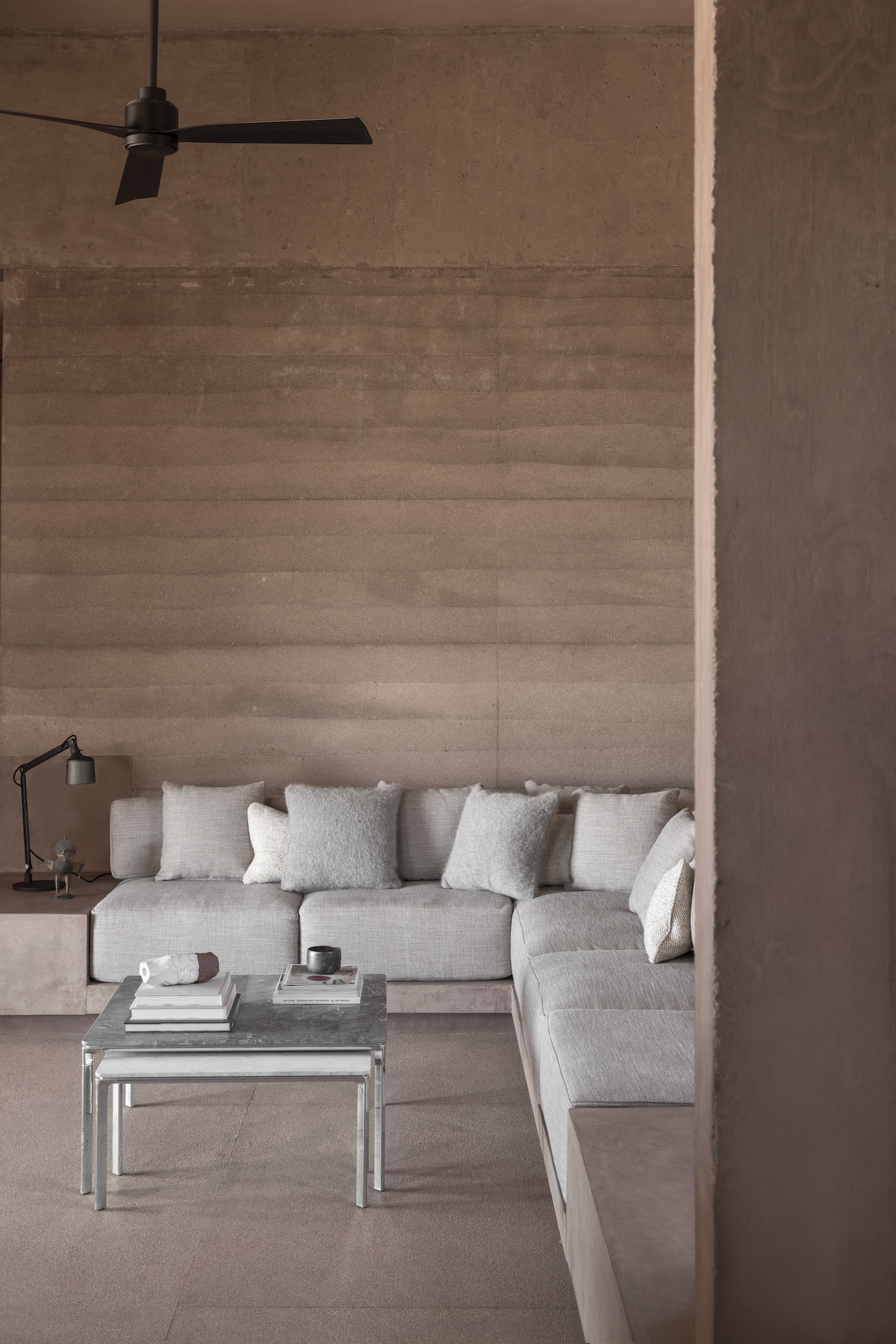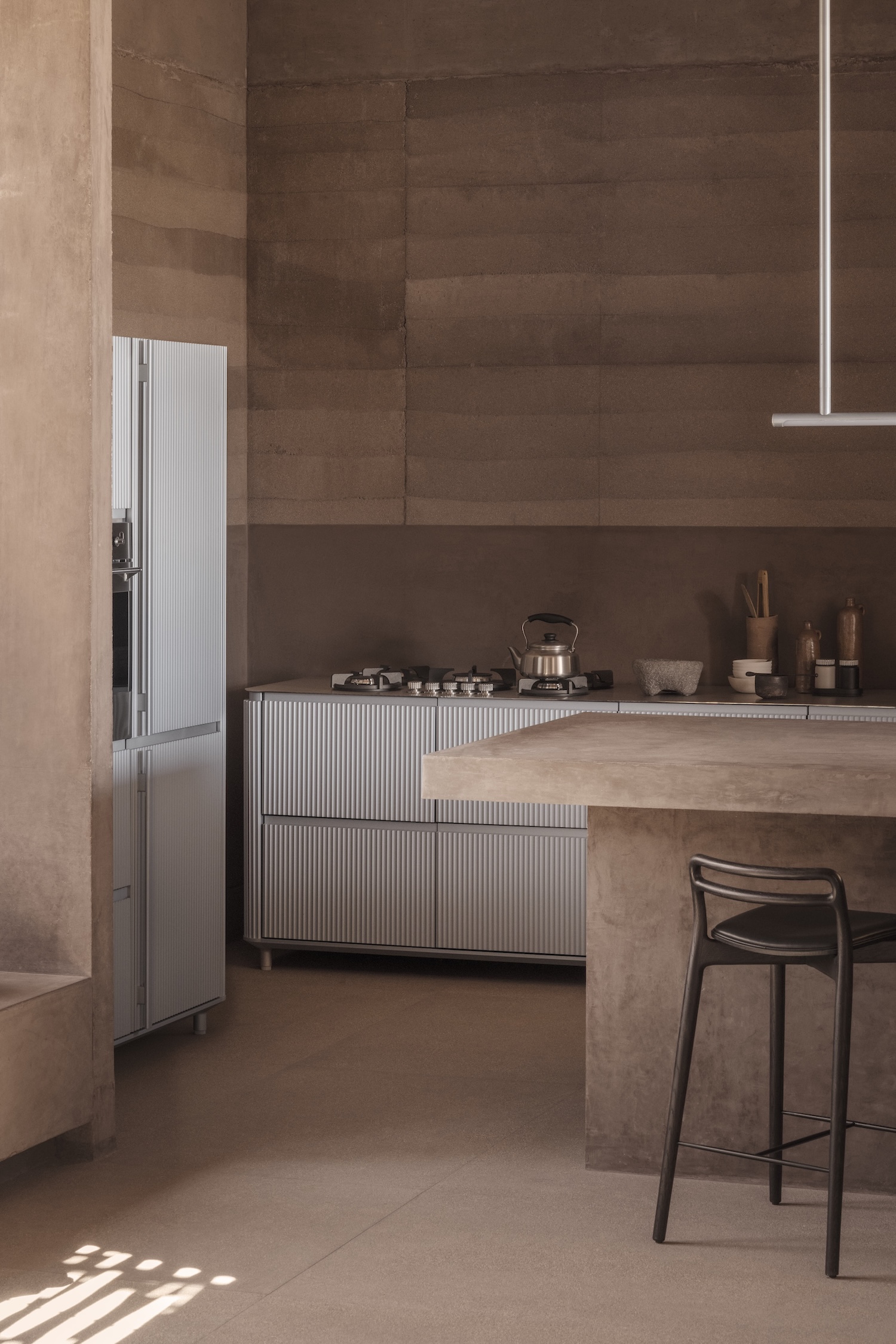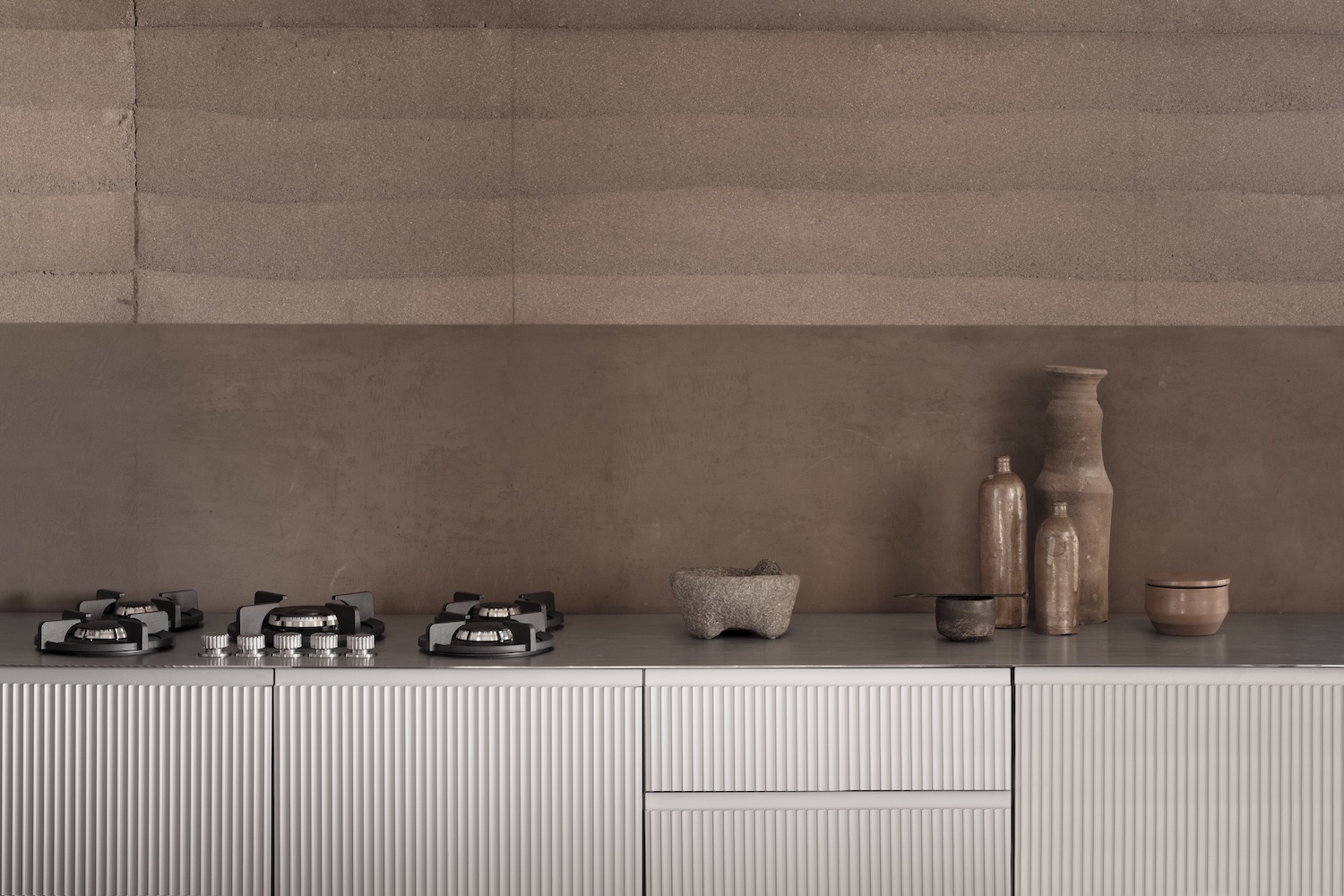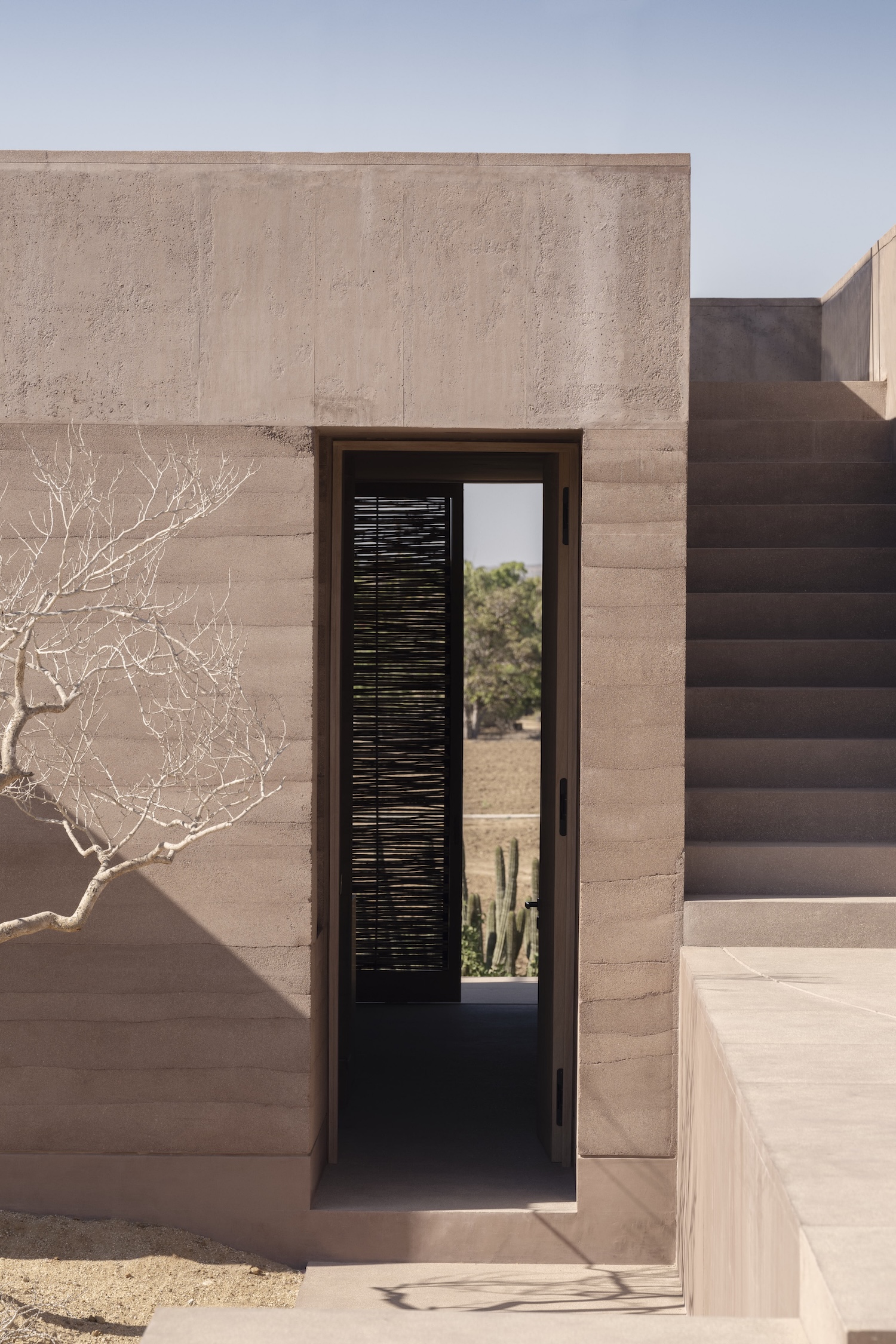Vipp Todos Santos is the 10th guesthouse of the Danish brand, and first outside of Europe located in Todos Santos, Mexico, designed by Pérez Palacios Arquitectos Asociados. Pablo Pérez Palacios of PPAA has orchestrated this dialogue with remarkable sensitivity, allowing the rammed earth construction to speak in its own voice while framing the Pacific Ocean beyond. The technique itself carries centuries of wisdom: compressed earth walls that breathe with the desert climate, cooling naturally by day and retaining warmth through coastal evenings. This is not mere sustainability as marketing strategy, but materials responding to place with an intelligence that predates modern environmental consciousness.
The interplay between Vipp’s industrial heritage and Mexican craft traditions finds its most eloquent expression in the furniture selections. When Sofie Christensen Egelund speaks of her grandfather’s 1939 bin and its enduring integrity, she reveals how design objects can carry forward not just aesthetic principles but entire philosophies of making. The new limited-edition Swivel Chair, upholstered in Pierre Frey’s vivid jacquard with bayadère stripes, exemplifies this fusion – its anodized aluminum frame providing industrial backbone while the textile pulses with the chromatic energy of Mexican visual culture.
Julie Cloos Mølsgaard’s interior approach demonstrates how contemporary design can honor local traditions without appropriation. The window shutters, woven from indigenous branches, do more than provide shade; they filter light into constantly shifting patterns, making the passage of time visible within the space. Each room becomes a sundial, marking hours through the play of shadow and illumination.
The circular rooftop pool functions as both amenity and architectural statement, its perfect geometry echoing ancient cenotes while providing what Pérez Palacios calls a “celestial oasis.” This positioning reveals how contemporary design can engage with landscape not as backdrop but as active participant in the spatial experience.
PPAA’s volumetric composition – main house, connected guesthouses, stepped terraces responding to topography – suggests a new model for hospitality architecture. Rather than imposing foreign forms, the design grows from the site itself, creating what amounts to a built landscape that happens to contain rooms.

















